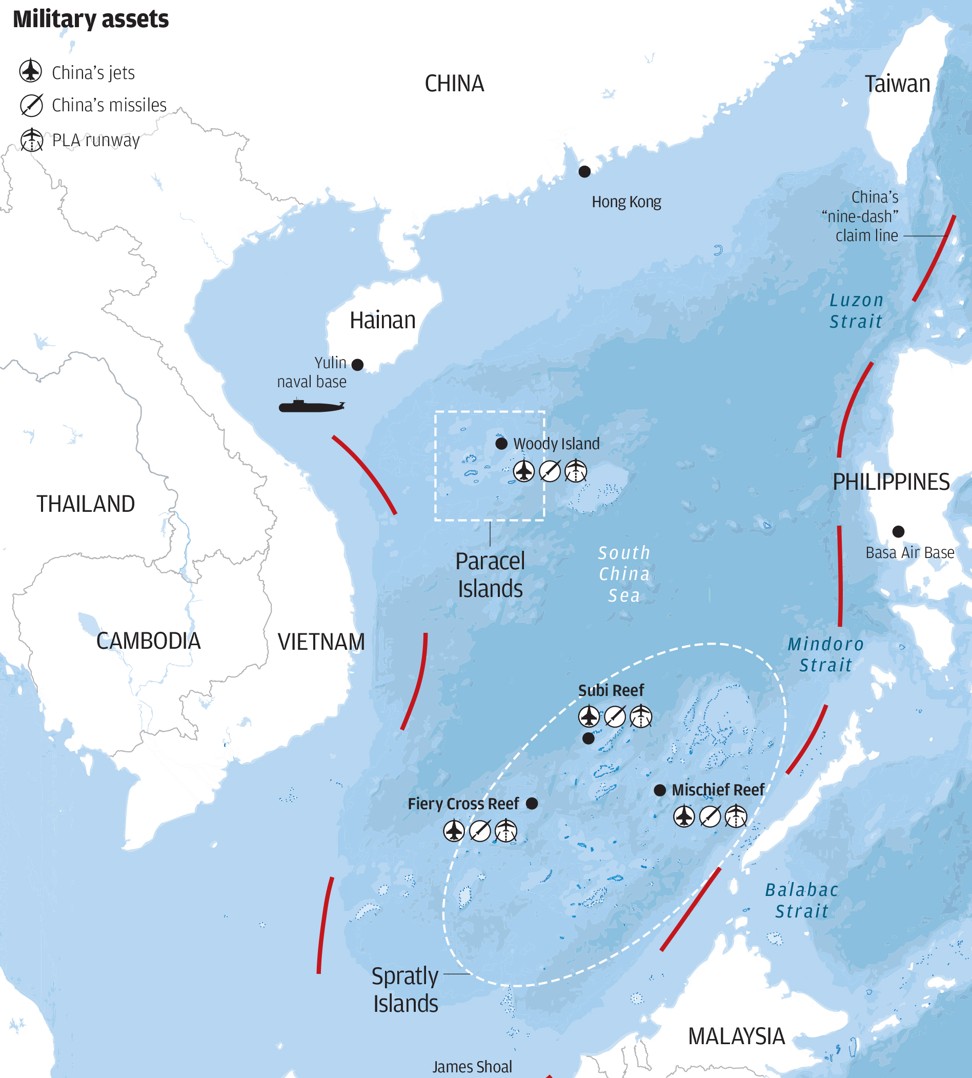
China is putting troops, weapons on South China Sea islands, and has every right to do so, PLA official says
Head of Chinese delegation at Shangri-La Dialogue in Singapore accuses US of being the real ‘source of militarisation’ in disputed waterway
China is well within its rights to station troops on islands it claims in the South China Sea, the head of the country’s military delegation at the Shangri-La Dialogue in Singapore said on Saturday in response to criticism by US Defence Secretary Jim Mattis.
“Deploying troops and weapons on islands in the South China Sea is within China’s sovereign right to do and allowed by international law,” said He Lei, a lieutenant general with the People’s Liberation Army.
“All irresponsible remarks [on the subject] are an infringement of China’s domestic affairs,” he told a press conference just two hours after Mattis said in his speech at the event that Beijing had been “intimidating and coercing” its neighbours with its military activities in the disputed waterway.
He also likened the construction of military outposts in the South China Sea to the decision by late paramount leader Deng Xiaoping to send a PLA garrison to Hong Kong after the 1997 handover, in a show of the country’s sovereignty in the region.
He’s comments were the first at such a public and international event to acknowledge Beijing’s plans to base both troops and weapons on its natural and man-made islands in the Paracel and Spratly archipelagoes.
China had previously insisted that its developments on a string of islets, reefs and shoals – the territorial rights to which are still fiercely contested by several countries and regions – would only ever be used for defence purposes.
Despite He’s admission, he batted back Mattis’ accusations, saying that the “close-up reconnaissance” carried out by two US warships – which sailed within 12 nautical miles of the Paracel Islands last week – was the real “source of militarisation” in the region.
In a meeting with former President Barack Obama during a visit to the US in 2015, China’s President Xi Jinping denied the country had plans to establish military strongholds in the South China Sea.
Satellite pictures released last month, however, showed Beijing has built at least four airstrips suitable for military aircraft, on Woody Island in the Paracels, and on Fiery Cross, Mischief and Subi reefs in the Spratly archipelago.
They also showed a Chinese H-6K strategic bomber taking part in take-off and landing drills on Woody, and the presence of YJ-12B anti-ship cruise missiles and HQ-9B long-range surface-to-air missiles on Fiery Cross, Mischief and Subi.
Andrei Chang, editor-in-chief of the Canada-based military magazine Kanwa Asian Defence, said Beijing had realised that it was impossible for it to continue to “cover up” the true nature of its plans for the South China Sea reefs.
“The satellite pictures show Beijing has stepped up its progress on militarising those island outposts, which will become the PLA’s naval and air force bases in the future,” he said on the sidelines of the Shangri-La Dialogue.
“The facilities and buildings flanked by radar equipment on the tiny islands … are not for civilian use, but are large-scale military complexes,” he said.
Meanwhile, He, who is also vice-president of the PLA Academy of Military Science, criticised Mattis’ remarks regarding Washington’s relations with Taipei.
The Pentagon chief said the US was “steadfastly committed to working with Taiwan to provide defence articles” consistent with the “obligations set out in our Taiwan Relations Act”.
He responded by saying: “The Chinese government and its people strongly oppose arms sale to Taiwan, all kinds of official government contacts to strengthen their ties with Taipei, as well as other acts to harm the ‘one-China principle’.
“The People’s Liberation Army has the determination, confidence and capability to safeguard the motherland’s safety, territorial sovereignty, integrity and its developing interests,” he said.
Zhao Xiaozhuo, a senior researcher at the Academy of Military Science, said that He’s comments suggested the PLA might be moving closer to considering military action to “reclaim” Taiwan if Washington insisted on supporting the island’s ruling, and independence-leaning, Democratic Progressive Party.
The DPP does not recognise the “1992 consensus”– an understanding that there is only one China, but that Beijing and Taipei can have their own interpretations of exactly what that means.
Andrew Yang, a former Taiwanese defence minister who is also at the security conference in Singapore, said he expected the US to tread carefully on the Taiwan issue so as not to provoke the mainland into taking military action against the self-ruled island.
“The United States will not be reckless and do things that would make the mainland think it is interfering in its internal affairs,” he said.
“US support for Taiwan has always been strong [but] we will also have to see how the [US President Donald Trump] administration reacts … [The Taiwan Act] will not take effect immediately and the US will consider its own interests.”
Additional reporting by Catherine Wong


